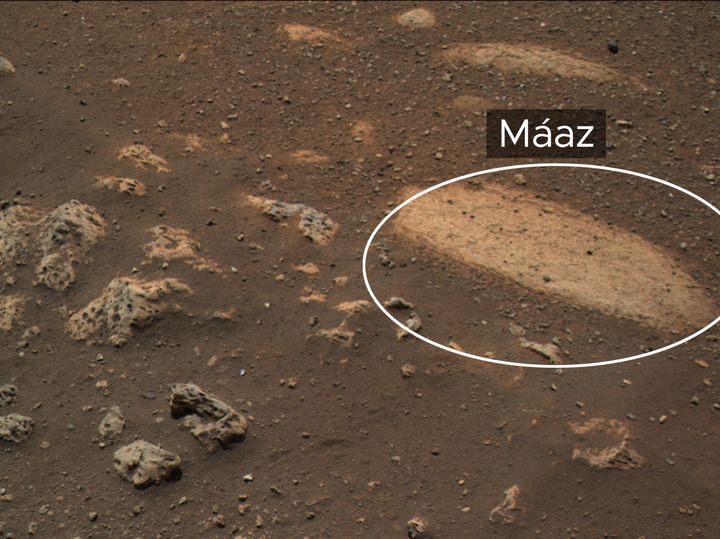In a joint effort with the Navajo Nation, NASA is naming landmasses and other notable features on the surface of Mars after words in the Navajo language.
The first of these is a rock identified by NASA’s Perseverance rover, which landed on the red planet last month. It is called “Máaz,” the Navajo word for Mars.

The teams behind the Perseverance’s mission worked with a Navajo engineer, Aaron Yazzie of the NASA Jet Propulsion Laboratory in Southern California, in conjunction with the Navajo Nation to develop a list of 50 terms that could be used for naming purposes, according to a NASA press release issued on Thursday.
Several of the terms were inspired by the rugged terrain the Perseverance — translated in Navajo to “Ha’ahóni” — has encountered on Mars’ surface; for instance, “tséwózí bee hazhmeezh,” which can be translated as “rolling rows of pebbles, like waves.”
Other potential names on the list included the Navajo words for strength (bidziil), respect (hoł nilį́), red rock (tsé łichíí), diligence (yéigo) and “amongst the sand” (séítah).
Yazzie said that using the language in such a manner was a unique opportunity “to inspire Navajo youth not just through amazing scientific and engineering feats, but also through the inclusion of our language in such a meaningful way.”
Navajo Nation President Jonathan Nez echoed this sentiment, and referred to the Native American “code talkers” who used indigenous languages to send secret messages to Allies during the war.
“Our words were used to help win World War II, and now we are helping to navigate and learn more about the planet Mars,” Nez said.
Perseverance is the largest and most sophisticated rover NASA has yet sent to Mars, and it will collect samples over the next two years that will hopefully answer questions about life on the red planet.
